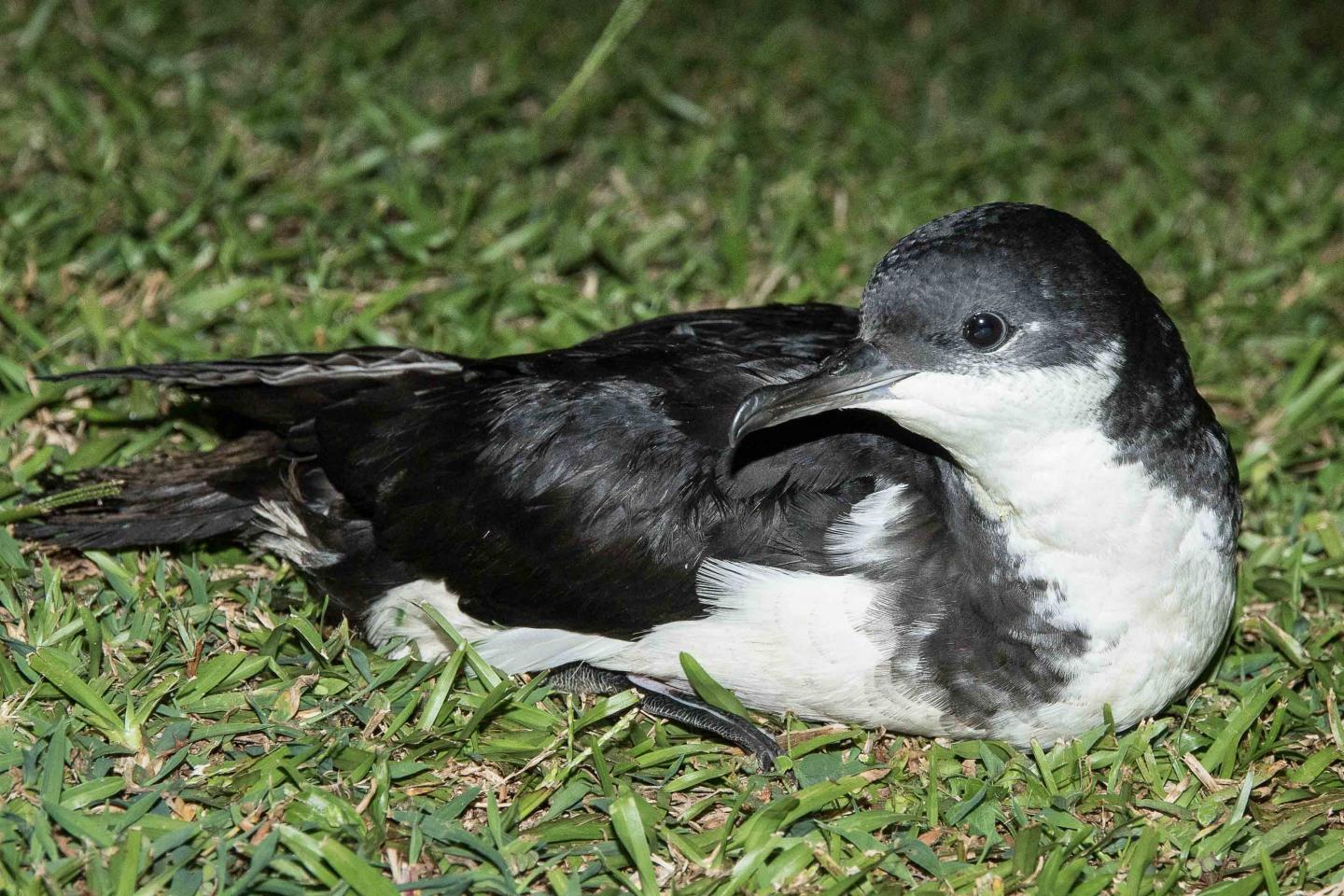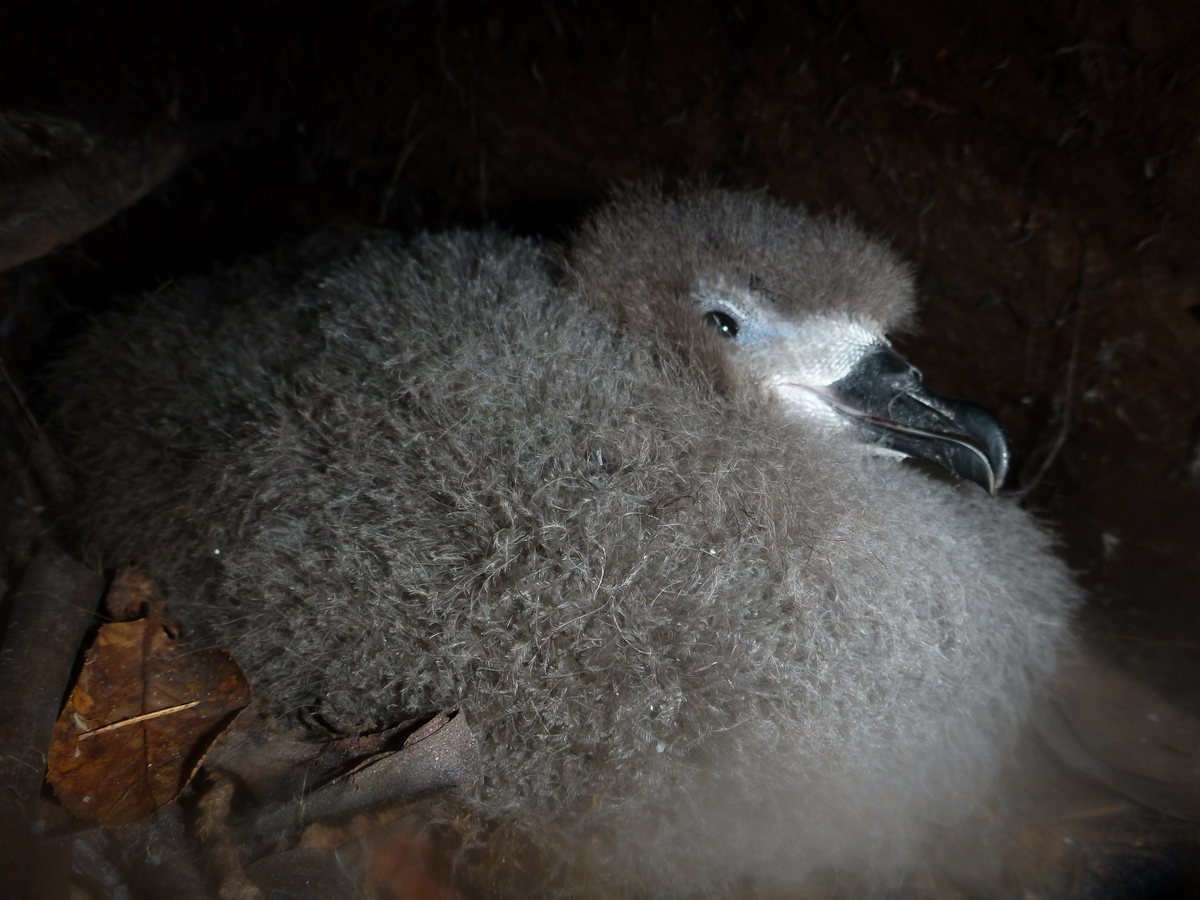
Newell’s Shearwater; photograph by Lindsay Young
André Raine (Archipelago Research and Conservation, Hanapepe, Kaua‘I, Hawaii, USA) and colleagues have published in the journal Waterbirds on nest-site aspects of the Endangered Hawaiian Petrel Pterodroma sandwichensis and the Critically Endangered Newell's Shearwater Puffinus newelli on the Hawaiian island of Kauai.
The paper’s abstract follows:
“The nest site characteristics of two endangered seabird species – the Hawaiian Petrel Pterodroma sandwichensis and Newell's Shearwater Puffinus newelli – on Kaua‘i were considered. Burrows of both species were predominantly found under tree roots or small caves on steep slopes and were associated with native plants, both in the canopy (particularly Metrosideros polymorpha) and the understory (particularly Dicranopteris linearis). There were, however, marked differences between the two species. Petrels were found at higher elevations with a shorter, patchy canopy and more open understory. Models using microhabitat variables were better able to classify burrows than those using landscape topographic metrics, suggesting that metrics describing the immediate area around the burrow are more important to burrow selection. A comparative model indicated that elevation and maximum vegetation height were the strongest variables in classifying between the two species. Understanding microhabitat needs for these species is important for locating new colonies and for the successful implementation of management actions such as colony creation through social attraction. Furthermore, wih the spread of Rapid’Ōhi’a Death canker disease Ceratocystis huliohia on Kaua‘i, the heavy reliance by both species on forest dominated by M. polymorpha (the tree killed by this disease) should be of increasing consideration for conservation efforts targeting these species.”

A Hawaiian Petrel chick in its burrow; photograph by André Raine
Reference:
Raine, A.F., Driskill, S., Rothe, J. & Vynne. M. 2021. Nest site characteristics of two endangered seabirds in montane wet forests on the island of Kaua‘i, Hawai‘i, USA. Waterbirds 44: 472-482.
John Cooper, ACAP News Correspondent, 13 September 2022

 English
English  Français
Français  Español
Español